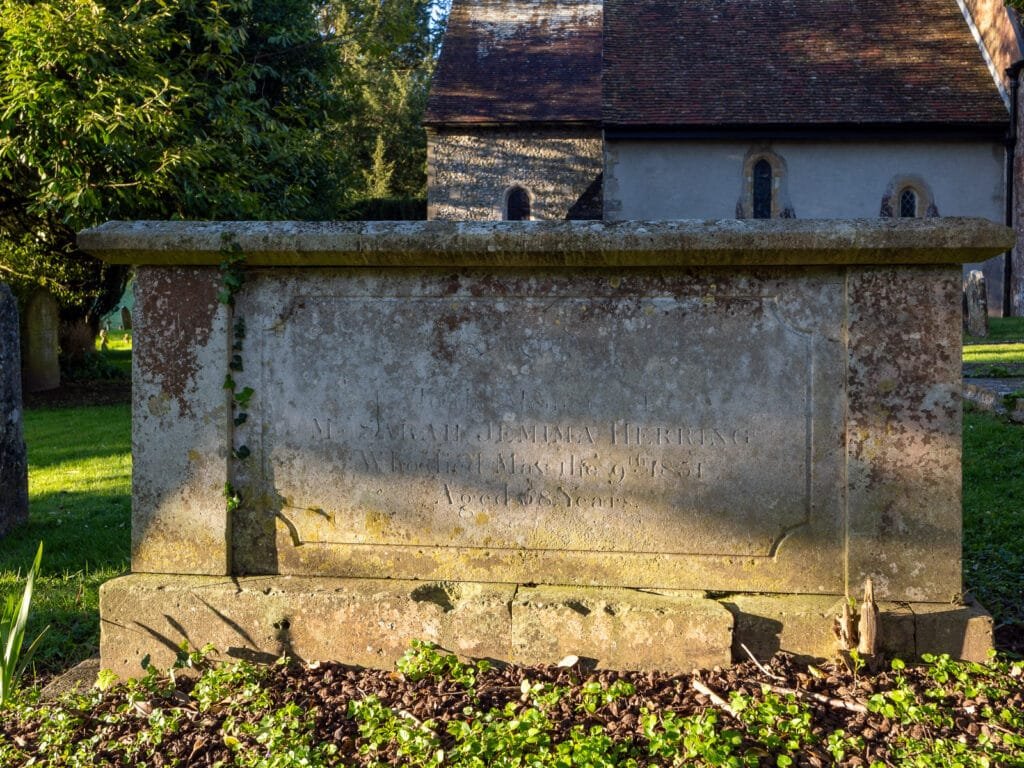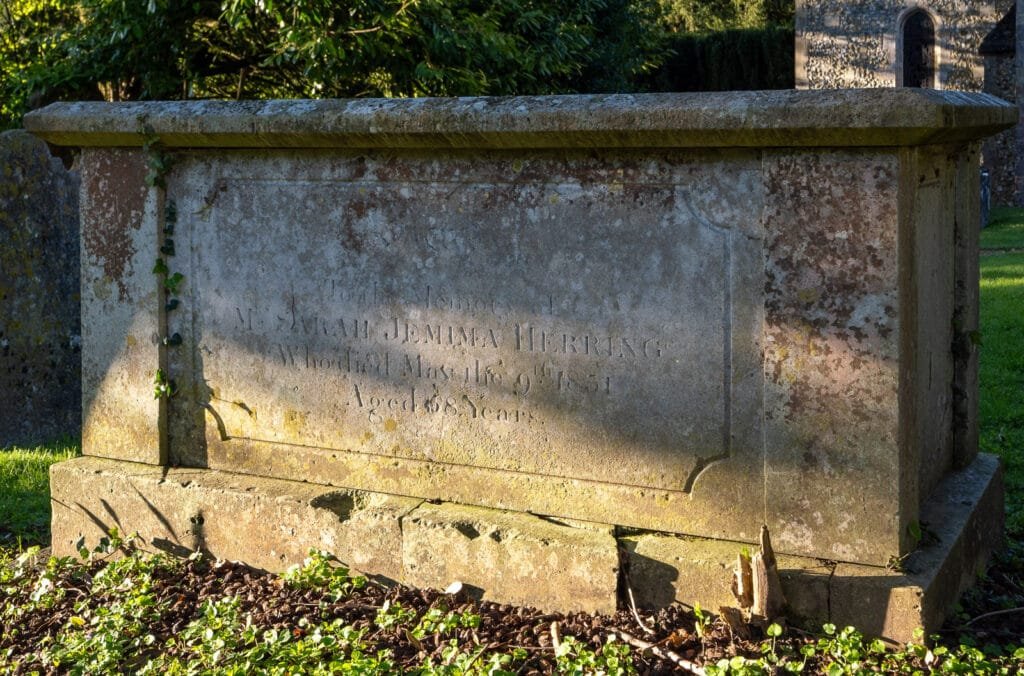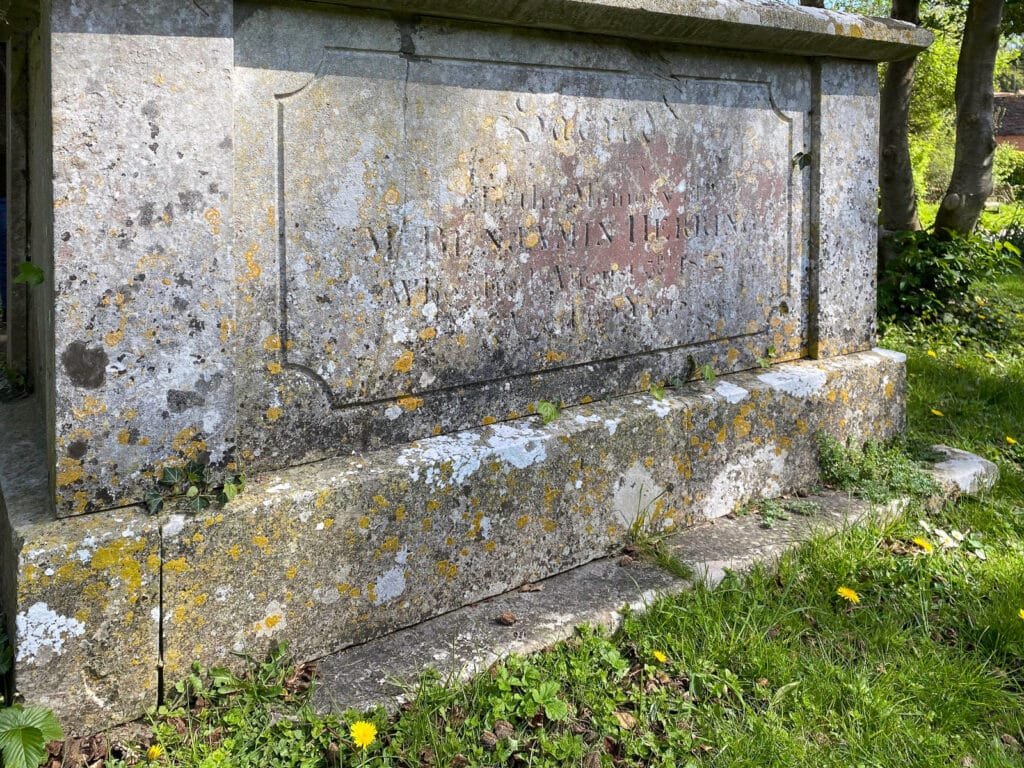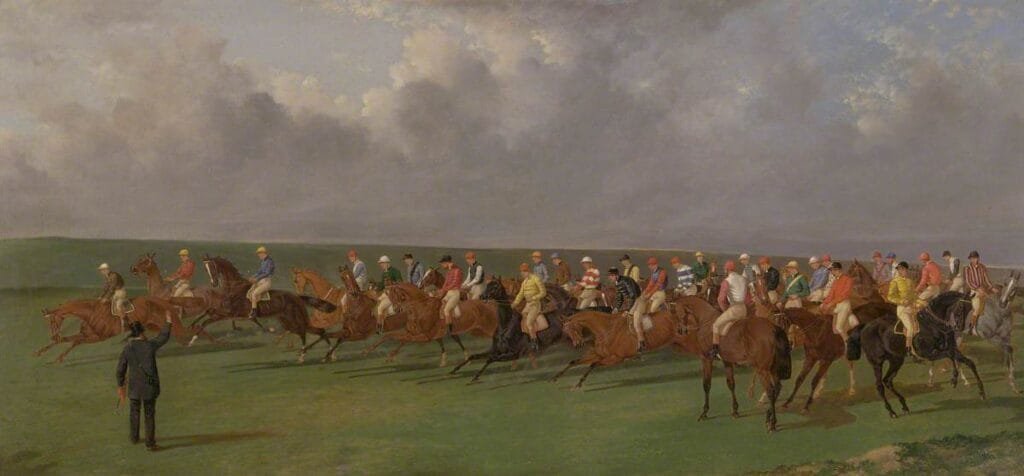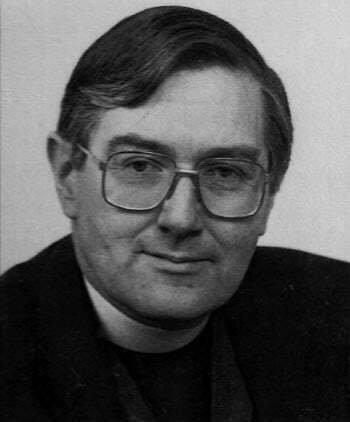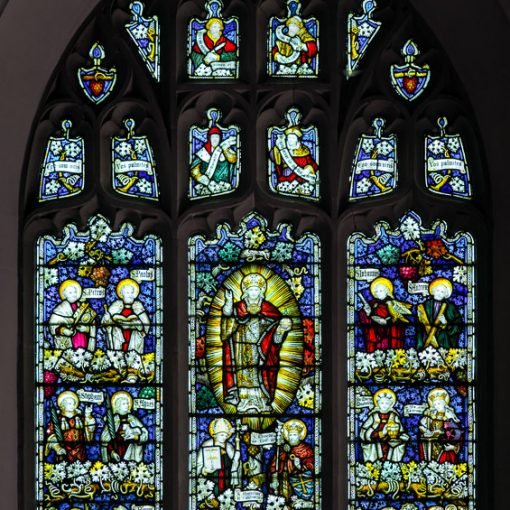For Compton & Shawford Local Historical Society
By David Herring
[Editor’s note: Many readers will already know that All Saints Church in Compton Street is a Grade II listed building. But did you know that 7 tombchests in the churchyard are also Grade II listed? One of the chests is described in the Historic England listing as “tombchest 1831 to Sarah Jemima Herring”. After a chance meeting with one of her descendants, who was visiting her grave, he sent me this about her and her family. This is a reprint (with additions) of the article which appeared in the Compton & Shawford Parish Magazine for November 2024]
Table of Contents
The Prison Governor and a family of artists
The Herring Family Tombchest
The inscriptions on both sides of the tomb are very worn, but it is delightful that they still show the family name “HERRING.” It is hoped that the following narrative about the ancestors’ interesting life will add to the Church’s own records.
Family ancestral records confirm that Benjamin Herring was born in New York in 1771 (while under the British flag) and was the son of Capt. Jan Frederick Herring (born in Curacao in 1742 and who was a merchant seaman) and Lucretia Van Duerson (born in Surinam, whose family had coffee plantations). Unfortunately, Benjamin’s father died in 1779 at the beginning of the American War of Independence, and his mother remarried a Mr. Francis, an Englishman living in New York, before they returned to England in Richmond, Yorkshire.
Benjamin Herring was sent as an apprentice to an upholsterer in Newcastle upon Tyne, after which he came to London where he set up his own upholstery business in Newgate Street in the heart of the City of London. He married Sarah Jemina Howard (from Wimborne, Dorset) in 1794, with whom he had nine children.
In 1825, Benjamin was appointed as Governor of Winchester County Gaol (now the Old Gaolhouse) and he held this post until his death in August 1832.
It is understood that the tomb in the Church yard was erected in 1831 to contain the remains of his wife Sarah Jemina, who had died in May 1831.
The inscription on side of the tomb facing the road can be seen most clearly in the very early morning light on a summer’s day. The epitaph on that side is presumably the original. It reads Sacred to the memory of Mrs. Sarah Jemima HERRING who died 9th May 1831 aged 58 years.
The records indicate that Benjamin remarried after his wife’s death and had a further daughter, Emily-Elija, born in October 1832, sadly after Benjamin’s death.
Benjamin died the the year after Sarah, on 3rd August 1832. The epitaph to Benjamin on the side of the tomb facing the Church is harder to read. In 1984 the Hampshire Genealogical Society recorded the inscription as “Sacred to the memory of Mr. Benjamin HERRING who died 3rd August 1832 aged 60 Years“
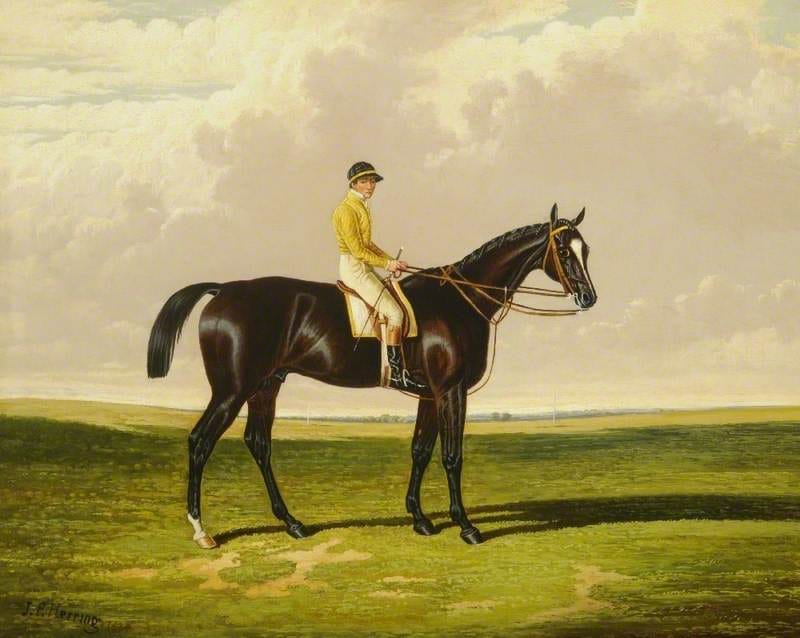
Benjamin and Sarah Jemina had four surviving sons, of which the eldest was John Frederick Herring (J. F. Herring Senior) (1795-1865). He was a celebrated English artist of horses, animals, and landscapes, especially fox hunting scenes, as commissioned for a popular range of Copeland-Spode China during the 19th century. In the 1840s, J. F. Herring was appointed Queen Victoria’s personal animal painter.
The second son was Charles (the great-great-great-grandfather of the writer), who lived in Camberwell, London, and worked as a bookkeeper for a brewery.
The third son, Francis, returned to his grandparents’ area of birth in the Caribbean and lived variously in both Curacao and Surinam.
The fourth son, Benjamin, was also an artist but died at 25. Excepting one daughter who never married and lived in Winchester, all other five children died young.
David Herring
great, great, great, great grandson of
Benjamin Herring
A family of painters
As mentioned above, J. F. Herring Senior’s younger brother Benjamin (1806-1830) was also a painter. He too painted mostly horses and his pictures come up for sale at auctions. You can see thumbnail images of many of his paintings at www.artnet.com/artists/benjamin-herring-sr.
He is often referred to as Benjamin Herring Sr because there is another Benjamin Herring.
Benjamin Herring Jr (1830-1871) was the youngest of six children born to John F. Herring, Sr. (1795 – 1865). Like his siblings, Benjamin received all of his training from his father and concentrated all of his efforts on sporting paintings.
His pictures also come up at auction – see https://www.artnet.com/artists/benjamin-herring-jr/
Winchester Gaol
We don’t know how Benjamin Herring came to be appointed Governor of Winchester Gaol, nor what connection led him to be buried in Compton churchyard.
There has probably been a prison in Winchester, mainly known as Winchester gaol, since the thirteenth century.[1]Wikipedia https://en.wikipedia.org/wiki/HM_Prison_Winchester
A substantial part of the former County Gaol, rebuilt 1788 and 1803 of three storeys in Classical style and closed in 1849, the predecessor of the present Winchester Prison survives in Jewry Street. It is now the Old Gaolhouse pub.
An annotated engraving inside thee pub tells us that the current building (now grade Il listed) was constructed in 1805.
The building’s frontage was designed by architect George Moneypenny (1768-1830), a well-known designer of English prisons in the 19th century. It featured three floors, a main governor’s house, and two wings with angled sections.
The Old Gaolhouse was the former governor’s house. In 1817, an inquiry committee criticised its impressive look, arguing that a prison should create fear, not admiration for its design.
After a new prison opened in Romsey Road in 1849, the old jail was closed and sold. In 1851, it became one of the first libraries in Britain and later turned into an ironmonger’s shop and then a furniture store.
References and Links
- All Saints Compton – Monumental Inscriptions 1659-1984, recorded by Members of the Hampshire Genealogical Society
- Historic England Grade II listing for 7 tombchests in Compton churchyard: https://historicengland.org.uk/listing/the-list/list-entry/1350497
- Touchstone painting by J F Herring Senior: http://www.artuk.org/artworks/touchstone-69171
- Herring II, Benjamin; Silks and Satins of the Turf; Yale Center for British Art; http://www.artuk.org/artworks/silks-and-satins-of-the-turf-247354
References
| ↑1 | Wikipedia https://en.wikipedia.org/wiki/HM_Prison_Winchester |
|---|

